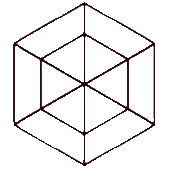2431 words
Parent: T.00_FR_The Art of Gaming Concepts – Topologies of Art, Platforms and Archeologies of the Future(s)
Discretely Whispering
“Everything divides into itself, I suppose”1
Samuel Beckett
“[…] perhaps that’s what I feel, an outside and an inside and me in the middle, perhaps that’s what I am, the thing that divides the world in two, on the one side the outside, on the other the inside, that can be as thin as foil, I’m neither one side nor the other. I’m in the middle. I’m the partition. I’ve two surfaces and no thickness, perhaps that’s what I feel, myself vibrating, I’m the tympanum, on the one hand the mind, on the other the world, I don’t belong to either, it’s not to me they’re talking, it’s not of me they’re talking, no, that’s not it, I feel nothing of all that, try something else, herd of shites, say something else, for me to hear, I don’t know how, for me to say, I don’t know how, what clowns they arc, to keep on saying the same thing when they know it’s not the right one, no”2
Samuel Beckett
Art, oh dear, could become a field of experimentations of collective concepts more than objects; concepts made uniquely for reframing the problematic we encounter whist living and sensing the difference-between, the difference between two languages that keeps dividing the subject —an actual presence. Concept weakening exploitative-fetishistic-commodifying desires; concept must be made to form an inter-collective dimension, displacing the subject on spaces-others to avoid its capture, its muted spectral-selves entrapped in privatised digital dimensions. As pure artists, namely as critical agents, we are partly unable to model permutations between registers of inscription and to invent points of conjunction —to invent forms of life, topologies of sense with the agency of change. Art could become an architectonic field, for building digital places, as we must aim at enabling what Stiegler called “tertiary retentions”, with “all the polysemic and plurivocal thickness of which the hypomnesic trace is capable”, and “[…] we must build and implement systems dedicated to the individual and collective interpretation of traces – including by using automated systems that enable analytical transformations to be optimized, and new materials to be supplied for synthetic activity”3. Why do we need to discuss that in the domain of art? Let’s take a step back to try to map, perhaps haphazardly given the nature of this text, the current situation.
Dreams. Recently I feel a certain blueness when it comes to imagination, I dream in fragments, eerie postmodern pastiches way more splintered than what they were before. The ongoing pandemic has changed oneiric landscapes, certainly it has accelerated a transformation. Dreams and speculative projection have been somewhat mutilated, incapacitating the radical core of creative actions. This is because, as Steigler wrote, the “short-circuiting of psychic and collective protentions, replaced by automatically generated protentions, impedes dreaming, wanting, reflecting and deciding, that is, the collective realization of dreams. And these obstructions are ultimately a systemic impediment to thinking, which then constitutes the basis of algorithmic governmentality as the power structure of computationally integrated 24/7 capitalism.”4 The necrosis of art, possibly its transformation, is only a symptom of a vaster transformation happening on the system of communication at large. We have abstracted and formalised, we have discretised our-selves from the very moment of our inception, from the very moment we branched out as species. You might have heard this refrain in media-theoretical circles, as actuality of this last decade seems to undeniably bring to life a critical twist. The weirdness that haunts us is that we must asses how language has morphed at an unprecedented speed into something other than what it was just when the end of history was declared. All good with the transmutation of our semiotic apparatuses into something potentially truly collective <at the very end one cannot take language as proto-technology, as ur-extention, so one cannot but hope that a word is able to graft itself instantaneously in multiple collective domains. All good with language as trans-individual virus; a matter in transformation that allows the human to exist and to grasp itself qua transformation right at the same moment as it grasps itself as semiosis, as logical-material extension, as the “human” lives through language, always anew, a processual inception. Which is to say to be and to live without essence, and so to be qua augmentation, to be able to see the nature of the species as one to be fabricated, and to see the nature of nature as ontologically voiced, inconsistent, and so able to accept constituent epistemological models of it. Thought is language, as language is thought’s ability to make and model nature. Thought is, and language is, a metastasis and a virulent transformation always and solely happening within a community of speakers. Thought’s exteriorisation, as Stiegler calls it, through mnemotechnical devices, is thought’s nature. Thought is its genetic augmentation; the very possibility of anticipating logic and action, the possibility of naming, categorising; language. The action of asking and giving reasons expands through the process of exteriorisation; thought expands because it is an organon of augmentation that crafts exterior processing and storing units, that speculatively prototypes its resistance to entropy. All good, almost, but we get it: there isn’t an “I” after all, but a process of abstraction. There are issues though. One is that language, and so the model of the world, has morphed into a collective trans-temporal domain, paradoxically one without true collectivity. The issue, witnessed from the moment of the constitution of real-time planetary communication, is one of an incremental disparity between the one that can speak and the one(s) that forced to listen, which is also a disparity between who could decide what to remember and who is left without agency upon its own processes of archival and exteriorization. As Stiegler stated it, “[b]y short-circuiting the protentional projections of psychic and collective noetic individuals, by phagocytically absorbing the milieus associated with them, and by sterilizing the circuits of transindividuation that are woven between them through their individual and collective experiences, by doing all this, algorithmic governmentality annihilates the traumatypical potentials of any protentions that might bear the possibility of neganthropological upheavals. Such is computational nihilism in the contemporary Anthropocene.”5 Natural language withdraws and transforms, due to its endless manipulations and permutations, reformatted as it gets spoken by infinitesimally fast operations of discretisation. The digitisation of the order of discourse, literally from the fractalisation of everyday speech to the automatic granularity of finance has gained a generalised observable scale —op-ed click-bait pieces are all onto that, graduates are all head-on debating either the benefits and or predicaments, of computational eschatology. Pff, as if one could choose and divide, as if technology is not from the start, the one and its double; a pharmakon, poison and medicine at the same time. Language as presence has dissipated long ago, silently at first, to leave space for pandemic tweets, protozoic masses swarming emancipated on the net, leaving remnants of semiotic presences emaciated by information industrialisation that takes anything spoken to reprocess it through automated computational protocols. Natural language withdraws and transforms, due to its the endless manipulation and permutation, reformatted as it gets spoken by infinitesimally fast operations of discretisation. Thoughts together with matters of the world get discretises and encrypted into information milieu, digital strings of code, chained and restituted to thought passing on pre-formatted systems —augmenting positively and negatively the system of retention and pretension. We see the algorithmic dynamics of stock market and the affirmation of analytical apparatuses which span from factory production to academic assessment; a system credit that has cancelled the feeling of (phenomenological) chance; the erotism of shadows. What we see at large is a structural diverging gap. We can observe the endless possibilities of recombination and augmentation through the digital, the necessity of employing robotisation, automatism and computation as our species’ self-implementation, as necessary tools for existential augmentation. Digital hyper-webs have given us alternative paradigms of creation and authorship, but we might as well see, how the digital coupled with algorithmically driven motors become autocatalytic acceleration with exponentially exploiting and exfoliating autonomy. By plunging deeper in the digital new models emerged together with an explicit darkness: the fact that processes of digitalisation, of algorithmic recombination, of analysis, together with all the material infrastructures that make bit pass and that store data, are not all publicly owned, only marginally so. Digitalisation and automation not only mean a freeing augmentation but more automatisation of control together with the exponential growth and sedimentation of capital in social-cultural monopolies. We see the rushing force of blockchain that offers the possibility of decentralising creation and democratising control, reformulating ownership —the hopes and visions of a post-capitalist society. We look at it and we see at the same time total dissolution of presence, exponential deregulation and entrapment, and capitalisation of any sign; once more, the exploitation of the precarious and of “immaterial" labour.
The dissolution of the bond between the conditions of the here and now —through abstraction-imagination and speculative projections— is thought’s innate drive, it is also for some reasons thought’s nemesis. Total recursive and self fulfilling abstraction. We write following Stiegler’s critical terms not to drive a regressive turn against technics; as that would be an impossible act given that thought is its technical capacity to project and store, as technics is first and foremost semiotic-logic structure in thought and its projection, exteriorisation outside of it. To reiterate, there are positive threads in the virulent charge of language, its dissipation and diffusion in the forms of microscopical inferences —but what we need to point at is the unequal distribution of infrastructural resources controlling-constituting-expanding language; in the digital, lesser than before for now, few have the agency to constitute the archives of the future; a bare minority has the agency to rebel, to have the agility and cognitive ability to form willingly hyper-spectral agencies, forms that are required to swing creatively between physical and the digital extensions.
Processes of collective abstraction carry forward an emancipatory potential: thought’s meltdown of the “given”, cognitive dissonances and neuro-divergent threads are vectors pulled forward by technological expansion and recursive torsion. The actual-digitality opens the human to something like an ontological chronic alternation —“templexity”, a concept we have no capacity to expand in here—, but also to something else. Something it had never witnessed, a true way forward, its possible communal augmentation through the collective mastering of abstraction. One though, that without recursive manipulation and administration turns back splintering desires and presences into a static mass of cognitive and bodily passivity. Processes of abstraction and the construction of a digital infrastructure are vectors for dissolving unitary sense of presence, for constructing forms of collectivity able to act and to have agency with and beyond all singularities, to make a planetary model for real-time communal actions. This is perhaps what the field of art should be, together with engineering, science, philosophy, politics. This is a model to be built as an artificial myxomycete (physarum polycephalum). “What is to be done”? We cannot return to a primitive state, the only way out is to access the formal structure of an environment that seems to be wondering autonomously towards its own self consumption, too vast in scale to be either grasped analogically and too complex to be computed in its totality. We must assess the ecosystem understanding how conceptually it is mediated (ideologically), accessing its complex mechanism without falling pray on one side to facile reductionism and dull determinism, on the other to infantile form of catastrophisms and at worst, to paradoxical negationism. We will never be ready to tackle the transformation of this seemingly unstoppable cycle of expansion —to transform our impact upon it, avoid incinerating the planet, to alter (diminishing if possible but transforming most possibly) our modes of production/consumption, to deviate from the unstoppable commodification of all things— if we do not act not only conceptually but upon the structure of the mediums through which the environment is built, mediated and invented-which is to say spoken-discussed-debated. We seem constantly subjected to either take and to absolutise one of the two terms: natural or artificial, analog or digital, sensual or formal. There’s no dualism deep down that our senses seem so easily to render, and the only things we are equipped with to go beyond dual-categorisation is a cunning reason. We could act; but the transformation will remain a puerile failure if we don’t understand how to model an alternative infrastructure for communication. A rebellion that can only start if we think differently, and to think differently is to speak differently. New linguistic practices must be tested and invented to stop thinking and re-presenting Nature as a necessarily stable term, to stop being accustomed to relating to it in ways that make it either too local or too global. Alternative models must weave together the digital and the analog, for seeing and operating both, the inherently analog movements of inorganic and organic matter and the inherently digital logic of language, one through which we have infra structured and translated the very model of ourselves. Again, this text does not claim to revolt against exponential digitalisation (and all process of technical manipulation, processes of automation) since a multi-threaded planetary infrastructure is the only way to run necessary functions to coordinate actions and transformations of all, by now, eight billion that inhabit this world —the world, an imperfect sphere with limited energetic resources. This is to start thinking of alternative modes for relating the “discontinuous” to the “continuous”, the in-depth systemisation of the relation between two systems of signification, two mediums that thought qua knot, possesses. This is to be done to output fearlessly new modes of speaking and of becoming, for inventing practices that can makes us radically reevaluate what we consider with the term “Us” and “Nature”, but also the “World”.
We need to understand how we, our presence, as that of semiotic viruses moves instantaneously, on wires in which alphabetic messages give way for more efficiency, speed and productivity. We need to grasp, perhaps to get hold and democratise, new apparatuses of memorisation, we must map and diagram horizontal platforms for collective communication and creation; such is a political project and a philosophical one. Clearly that is the intersection at which an artistic one is to be created. “Achieved cognitive mapping will be a matter of form”6, Fredric Jameson reminded us, and form is a matter of abstraction, of formalisation. A new medium and model must be imagined for constructing a “second-third-fourth nature”, with feathered feet… considering the complexities and contingencies of this indifferent environment, in which we are situated and to which we are contingently bounded. We should be inventing reiteratively our relation to such environment without anthropomorphising it, though with the “fear and tremblings” of a parasite that has discovered that is made of parasites, and that what makes nature and itself is instability, metamorphosis, and the “open”. And for us all that is nothing, if we are unable to subject ourselves and nature to a process of construction.
References
1 Samuel Beckett, “Malone Dies” (London: John Calder Publishing, 1915) p.182.
2 Samuel Beckett, “The Unnamable” (London: John Calder Publishing, 1915), p.386.
3 Bernard Stiegler, “The Neganthropocene”, edited, translated, and with an introduction by Daniel Ross (London: Open Humanities Press, 2018), p.49–50.
4 Ibid, p.46.
5 Ibid, p.49.
6 Fredric Jameson, “Cognitive Mapping”, in Nelson, C. / Grossberg, L. ed., Marxism and the Interpretation of Culture (Champaign: University of Illinois Press, 1998), p. 347–60.
Links
︎ @remxbj ︎ formaxioms.com ︎ remixstudio.org
From the same writer
T.00_FR_The Art of Gaming Concepts – Topologies of Art, Platforms and Archeologies of the Future(s) T.01_FR_Cognitive Dissonance and Non-entropic Fields T.02_FR_Place(s) of Art T.03_FR_Discretely Whispering T.04_FR_Transcendental Objects of Desire. Art and the Valuation of the Unknown T.05_FR_What Conceptualism After Conceptual-Art? (Platforms – Abstraction and Emancipation) T.06_FR_ENCORE: Militant-art and Alien-Subjectivity – Writing Worlds T.07_FR_Choreographing Fields: the Boundlessness of Digital Archives






